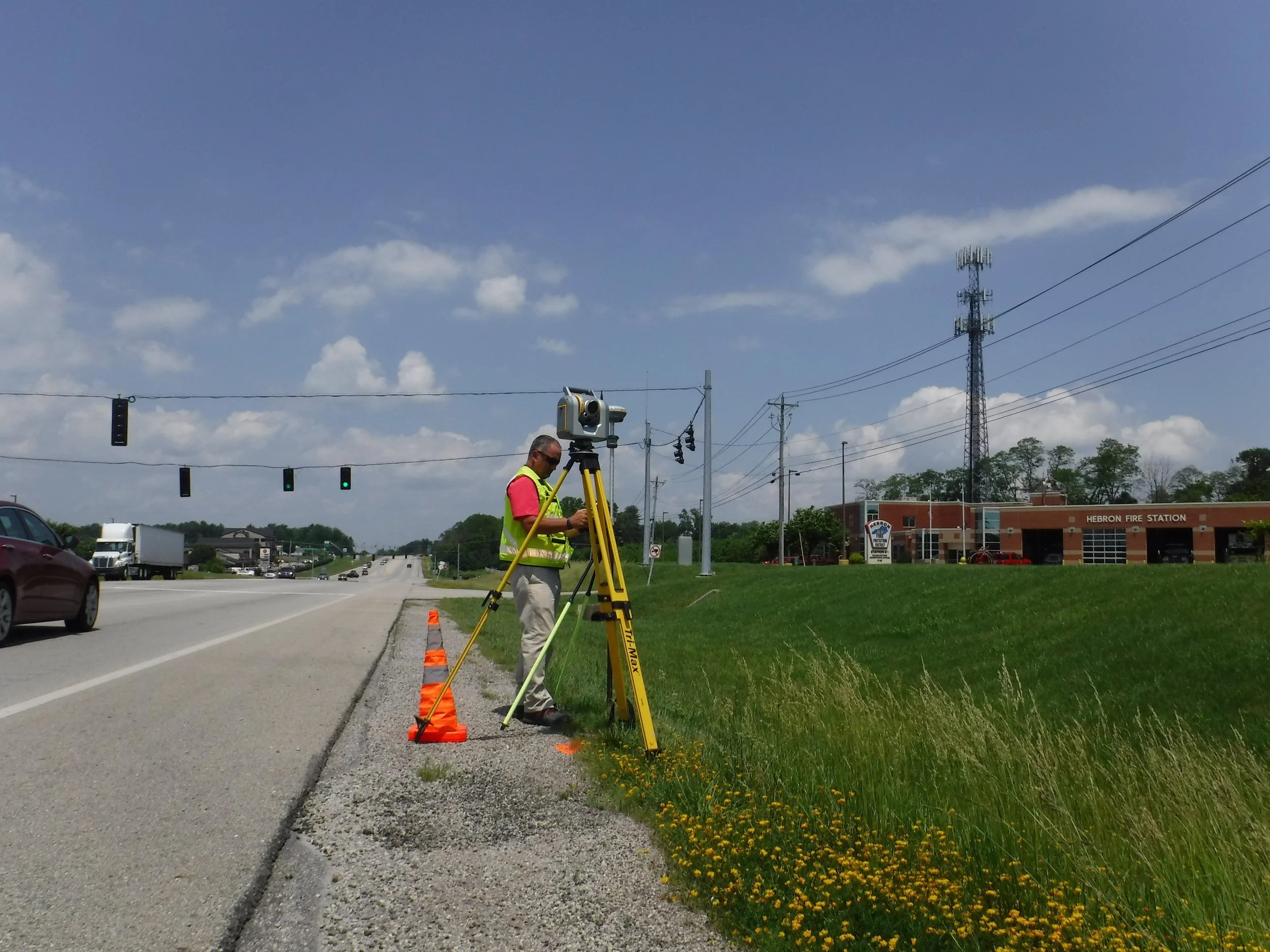
Subsurface Utility Engineering Services
KENTUCKY
SURVEYING
Palmer Engineering provides comprehensive Subsurface Utility Engineering (SUE) services that reduce utility conflicts, minimize change orders, and keep projects moving. Working under four consecutive Kentucky Statewide Surveying Services contracts (2017–2025), Palmer—partnering with AEI surveyors—has completed multiple SUE projects across Kentucky, combining precise staking, Ground Penetrating Radar (GPR), line locating, and vacuum excavation (potholing) to deliver reliable utility data for design and construction.
Projects
KY 245 (Bullitt County, Kentucky)
Palmer Engineering performed stake-out, GPR location, and vacuum excavation at four test locations to verify the position of an 8" gas main along KY 245.
GPR and a line locator were used to refine utility positions prior to excavation
Three of the four locations were successfully verified
Verified depths ranged from 2.6 feet to 4.3 feet
US 60 (Jefferson County, Kentucky)
Staking and vacuum excavation were performed at 17 locations along US 60 to verify LG&E gas and electric lines as well as AT&T communication facilities.
Ground-penetrating LiDAR and a line locator were used to refine painted utility marks into precise excavation points
16 of the 17 locations were successfully verified, with one utility found at a depth greater than 6 feet
Results provided critical support for utility coordination along this high-volume corridor
KY 1942 (Grant County, Kentucky)
SUE services were performed to support a bridge replacement project by confirming the location of a waterline adjacent to and crossing KY 1942.
Staking and vacuum excavation were completed at five locations
Utility markings were fine-tuned to minimize disturbance and target potential conflicts at bridge abutments
All five locations were successfully found and documented for use by the design team
US27/New Circle Road (Fayette County, Kentucky)
SUE services were performed in a constrained urban environment to support the R. J. Corman railroad bridge replacement project.
18 utility locations investigated, including gas mains, water lines, and sanitary sewers
Work required extensive traffic control, and shallow rock blocked excavation at approximately 3 feet in some areas
Staked points were adjusted as needed to avoid traffic conflicts and maintain safe operations
KY 1934 (Jefferson County, Kentucky)
Comprehensive SUE investigations were conducted along a busy Louisville corridor to identify and verify underground utilities in support of planned roadway improvements.
34 utility locations examined, including gas, water, and fiber optic facilities
Ground Penetrating Radar (GPR) used to fine-tune excavation points before digging
Work required an encroachment permit and coordinated lane closures, with traffic control measures implemented to ensure the safety of workers and the public
Where Expertise Meets Results
-
Capabilities & Approach
Investigation Methods: Staking, GPR, line locating, and vacuum excavation to confirm utility type, position, and depth.
Safety & Traffic Control: MOT plans, lane closures, and permits coordinated with agencies and local stakeholders.
Data Quality: Horizontal/vertical control tied to project coordinates; photographs, field sketches, and tabulated results.
Deliverables: Utility basemap updates, CAD files, depth logs, and conflict reports aligned with project design needs.
-
Deliverables
Utility test hole logs with as-found depths and photos
Updated CAD basemaps and utility layers tied to project control
Summary conflict reports for design coordination
Permit documentation and traffic control records
-
Why It Matters
Fewer surprises in the field: Verified depths and locations reduce RFIs, delays, and change orders.
Design clarity: Confident utility data informs alignments, drainage, and structure details.
Safer construction: Targeted potholes and MOT planning keep crews and drivers safe.
Key Team Members
-

David Lindeman, PE, PLS
PROJECT MANAGER
-

Craig Palmer, PLS
TEAM MEMBER
-

Kelly Whittington, PLS
TEAM MEMBER
-

Jody Barker, PLS
TEAM MEMBER
-

Steve Workman
TEAM MEMBER
-

Will Graves, EIT, LSIT
TEAM MEMBER

